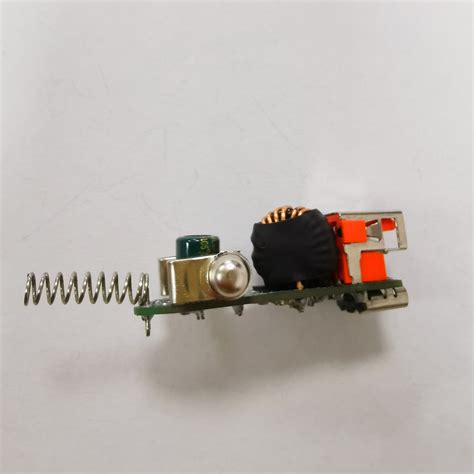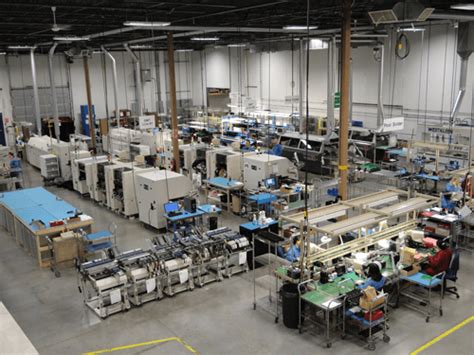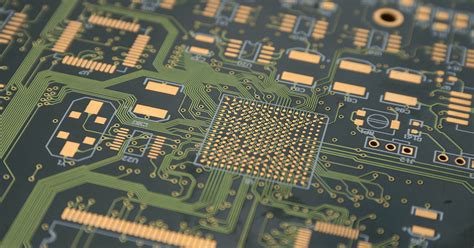Unlocking Innovation: Custom Circuit Board Assembly Explained
Key Takeaways
Understanding the intricacies of custom circuit board assembly (or PCBA) is essential for those looking to innovate within the tech industry. A significant takeaway from the discussion on pcb assembly is the necessity of tailored solutions that cater to specific project requirements. These customized approaches not only enhance functionality but are also integral in ensuring that the assembled circuit boards can effectively perform their designated tasks within various devices. Moreover, successful pcba relies on a deep knowledge of key components in circuit board design and an understanding of how these components interact within a system. The customization of these boards presents a competitive edge, allowing businesses to differentiate their products in a crowded market. By embracing custom circuit board assembly, organizations can also adapt to future trends and advancements, which is vital for sustained innovation and relevance in technology. As we move forward, keeping a pulse on these key aspects will be critical for harnessing the full potential of innovation through enhanced appropriately designed circuit assemblies.
Introduction to Custom Circuit Board Assembly
Custom circuit board assembly, often referred to as pcb assembly or PCBA, plays a critical role in the contemporary technological landscape. Understanding this process is essential for businesses seeking to innovate and maintain a competitive edge. At its core, pcb assembly involves the meticulous integration of various components onto a printed circuit board (PCB), which serves as the foundation for electronic devices. Tailored solutions in this field allow manufacturers to create specific designs that meet unique project requirements, ultimately enhancing functionality and efficiency.
The significance of custom solutions in pcba cannot be overstated. Businesses can achieve optimal performance tailored to their needs by customizing designs and selecting components that align with their specific operational goals. For instance, various applications—from consumer electronics to industrial machinery—require specialized configurations, demonstrating the adaptability of circuit board assembly processes.
In the following sections, we will delve deeper into how these tailored approaches not only bolster innovation but also play a pivotal role in improving overall functionalities in technology sectors.
Table: Benefits of Custom PCB Assembly
| Benefit | Description |
|---|---|
| Enhanced Performance | Optimizes device functionality through tailored designs |
| Cost Efficiency | Reduces material waste and lowers production costs |
| Faster Time to Market | Streamlines development processes through customization |
| Improved Reliability | Increases device longevity with quality components |
“Leveraging custom circuit board assembly is vital for businesses looking to differentiate themselves in a fast-paced technological environment.”
Ultimately, understanding the principles behind custom circuit board assembly is crucial not only for manufacturers but also for project stakeholders who aim to harness technology’s transformative power. With advancements constantly evolving, embracing these tailored solutions is a strategic move towards achieving exceptional results.
The Importance of Tailored Solutions in Technology
In today’s fast-paced tech landscape, the significance of tailored solutions such as custom circuit board assembly (or pcb assembly) cannot be overstated. Unique project requirements often demand innovative approaches that standard solutions simply cannot provide. This is where the expertise in custom pcba becomes invaluable. By creating circuit boards that are specifically designed to meet particular needs, organizations can achieve higher levels of functionality and performance. These custom designs not only address specific technical challenges but also allow for greater flexibility in integrating various components, which is crucial for enhancing overall project efficiency. Moreover, by utilizing tailored pcb assembly processes, companies can stay ahead of their competitors while ensuring that their products meet the highest quality standards and regulatory requirements. In essence, investing in custom solutions fosters a culture of innovation and responsiveness that is critical for thriving in a competitive technological environment.
Key Components in Circuit Board Design
In the realm of pcb assembly, understanding the key components that contribute to effective circuit board design is essential for achieving optimal performance and functionality. At the heart of every pcba lies the substrate, which provides the structural foundation for electrical connections. This substrate is usually made from materials like FR-4, which balances affordability with performance. Next, we have the copper layers that are strategically placed to create conductive pathways between components, enabling them to communicate effectively.
Another vital element is the component placement, which dictates how parts such as resistors, capacitors, and ICs are arranged on the board. Properly executed placement maximizes efficiency and minimizes potential interference, ensuring that signals remain strong and reliable. Additionally, incorporating features like vias allows for vertical connections in multilayer designs, enhancing circuit density without compromising space.
Last but not least, considering design for manufacturability (DFM) during the pcb assembly process cannot be overstated. This principle ensures that all components are not only placed effectively but also aligned with production capabilities—reducing errors and speeding up time-to-market. By blending these essential components thoughtfully, engineers can drive innovation and meet unique project requirements with tailored solutions in the ever-evolving landscape of technology.
Step-by-Step Process of Custom Circuit Board Assembly
The process of custom circuit board assembly (or PCBA) is multifaceted and essential for creating efficient and innovative electronic products. It begins with a thorough analysis of the project’s specifications, where engineers collaborate with clients to define unique requirements and desired functionalities. The next step involves designing the schematic and layout of the PCB, which is crucial for optimizing space and ensuring electrical performance. After the design phase, the creation of a prototype allows for testing and validation of concepts before full-scale production begins.
Once approved, the actual assembly process can commence. This typically entails mounting components onto circuit boards using techniques such as surface mount technology (SMT) or through-hole technology (TH). Adequate attention is given to soldering methods, ensuring that connections are strong and reliable. Next, rigorous testing forms an integral part of the assembly process, identifying any potential issues with functionality or performance. This includes both automated tests and visual inspections to verify that every board meets the required quality norms.
Finally, after passing all tests, PCBA units can be packaged for delivery. This meticulous step-by-step process ensures that each custom circuit board assembly not only meets industry standards but also aligns perfectly with the specific needs of each project, ultimately contributing to a competitive edge in technology through enhanced functionality and tailored solutions.
Enhancing Functionality through Innovation
In today’s fast-paced technological landscape, pcb assembly plays a pivotal role in enhancing the functionality of electronic devices. Custom circuit board assembly, or pcba, is not just about connecting components; it’s about creating a tailored solution that meets specific project requirements. By leveraging the latest advancements in design and materials, engineers can optimize the pcba process to enhance performance and reliability. Each component is carefully chosen to ensure that it contributes effectively to the overall design, resulting in innovative solutions that address unique challenges. Furthermore, the integration of advanced features such as miniaturization and adaptive functionality can significantly improve device capabilities. When organizations invest in custom circuit board assembly, they do not just receive a product; they gain a competitive edge defined by enhanced functionality, sustainability, and adaptability in an ever-evolving market. This approach reflects a commitment to innovation that is crucial for businesses looking to thrive in an increasingly technology-driven world.
Meeting Unique Project Requirements
In the realm of pcb assembly, addressing unique project requirements is crucial for success. Every project presents its own set of challenges and specifications, which necessitates customized approaches in pcba processes. When manufacturers recognize the distinct demands of their clients, they can tailor solutions that are not only functional but also innovative. This customization often involves selecting specific materials, incorporating advanced technology, and designing layouts that optimize performance while minimizing production costs. By focusing on individual project needs, companies can enhance flexibility in their designs and ensure that the final product aligns seamlessly with intended applications. Furthermore, aligning with industry standards while enhancing customization allows businesses to remain competitive in a rapidly evolving market. Ultimately, understanding and meeting these requirements leads to a more efficient manufacturing process and a significant advantage in delivering reliable and cutting-edge technology solutions.
Competitive Advantages of Custom Solutions
The development of custom circuit board assembly (PCB assembly) offers a myriad of competitive advantages that can profoundly influence a company’s market positioning. By opting for a tailored approach to PCBA, businesses can address specific functionality and performance requirements that standard solutions may overlook. This customization allows for the integration of advanced technologies and features that enhance the overall product efficacy. For instance, utilizing custom solutions often results in a more efficient use of space on the circuit board, leading to a reduction in size and weight while ensuring robustness. Furthermore, these specialized assemblies can be designed to meet unique project demands—ranging from unique component placements to specialized materials—allowing innovators to create products that stand out in an increasingly crowded marketplace. By investing in custom circuit board assembly, companies not only improve their product offerings but also bolster their reputation as leaders in technological advancement, making it an essential strategy for achieving sustainable growth and maintaining a competitive edge.
Future Trends in Circuit Board Manufacturing
As technology continues to advance rapidly, the landscape of pcb assembly is undergoing significant transformations that reflect both the demands of modern applications and the innovations in manufacturing techniques. One of the most notable trends is the shift towards smart manufacturing, which utilizes automation and data analytics to improve efficiency and precision. This trend not only enhances the speed of production but also reduces waste, making pcba more environmentally friendly. Additionally, as miniaturization becomes increasingly critical, manufacturers are exploring advanced materials and processes that allow for smaller, more compact designs without compromising functionality. The integration of IoT (Internet of Things) into circuit board manufacturing is another pivotal development, enabling real-time monitoring of production lines and quality control measures. These innovations not only streamline operations but also empower engineers to create more reliable and efficient products tailored to specific needs. As these trends unfold, companies that adapt to them will find themselves with a substantial competitive edge in the ever-evolving landscape of technology—ensuring that their custom circuit board assembly solutions remain at the forefront of innovation.
Conclusion
In a rapidly evolving technological landscape, pcb assembly plays a pivotal role in driving innovation. The custom circuit board assembly process enables manufacturers to create solutions tailored to specific needs, enhancing both functionality and performance. With unique project requirements at the forefront of design considerations, the practice of pcba becomes even more significant. Through careful selection of materials and meticulous craftsmanship, every aspect is designed to optimize the board’s capabilities. As industries continue to seek a competitive edge, embracing tailored solutions in circuit board design not only delivers superior functionality but also positions companies at the forefront of technological advancement. The integration of emerging trends and sustainable practices into custom solutions is essential for future growth. Thus, as we look ahead, the importance of investing in quality pcb assembly will only become more pronounced in maintaining relevance and success in this dynamic environment.
FAQs
What is custom circuit board assembly (PCBA)?
Custom circuit board assembly, often referred to as PCBA, involves the fabrication, designing, and assembly of electronic components onto a printed circuit board. This process ensures that the final product meets specific requirements tailored for different applications.
Why is custom PCB assembly important?
Custom PCB assembly is crucial because it allows engineers and designers to create specialized solutions that cater to unique challenges. By optimizing pcb assembly, companies can enhance functionality, reduce costs, and meet specific project demands effectively.
How does the PCB assembly process work?
The PCB assembly process typically includes designing the schematic, creating a prototype, assembling components on the circuit board through techniques such as surface mount technology (SMT) or through-hole mounting, and finally testing the assembled board for functionality and quality.
What are the key components used in custom PCB assembly?
Key components often used in pcb assemblies include resistors, capacitors, integrated circuits (ICs), connectors, and other electronic parts that are necessary for creating complete electronic systems.
Can custom PCBA help in enhancing product functionality?
Yes! Custom PCBA allows for innovative solutions that improve overall product performance. Tailored designs can support advanced features that meet current technological standards while catering to specific operational needs.
For further details on customizing your circuit board projects or inquiries related to pcb assembly, please visit our site: please click here.







